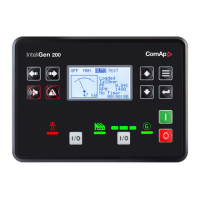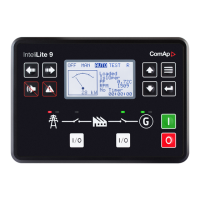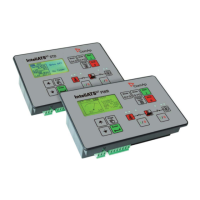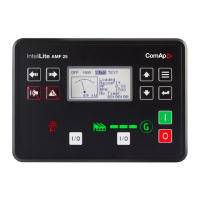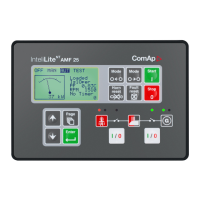Communication Guide, ©ComAp – March 2014 82
IGS-NT Communication Guide 03-2014.pdf
CAN-Ethernet gateway allows you to merge up to four CAN bus branches into one global CAN bus
using Ethernet connection. For detailed information about this option see:
http://www.comap.cz/support/downloads/fail/AS10%20-
%20Ethernet%20based%20CAN%20extension%20r1.pdf
Hint:
For CAN bus extension is possible to use I-CR module. It allows extension of CAN to more segments
with next 200m adition length. for more information read chapter I-CR Module for CAN bus extension.
RS485 connection
External units can be connected on the RS485 line in any order, but keeping line arrangement (no
tails, no star) is necessary.
Standard maximum line length is 1000m.
Shielded cable has to be used, shielding has to be connected to PE on one side (controller side).
RS485 and CAN bus line has to be terminated by 120 ohm resistors on the both ends. Always check
the number and placement of terminating resistors in the CAN bus line, only correct wiring ensures
reliable operation! Resistors must be placed at either end of the line (see picture), and correct number
of resistors must be used! Correct number can be checked using ohmmeter - when power supply for
ALL devices on the CAN bus line is switched off, the resistance measured between A and B wire
should be 60 Ohms. For longer distances is recommended to connect CAN COM terminals between
all controllers and cable shielding to the ground in one point. External units can be connected on the
CAN bus line in any order, but line arrangement (no tails no star) is necessary.
In some cases is necessary to use the optical isloation of RS485 line. Some modules has ebmaded
optical isolation some needs aditional equipment to ensure the required separation. The need of
galvanic separation depends on distance between the nodes and surrounding of transmittion line. See
the table of recommended connection of RS485.
Distance between two nodes / the need of galvanic separation
Same power supply
No disturbance
Same power supply High
disturbance
Diferent power supply
No disturbance
Diferent power supply
High disturbance
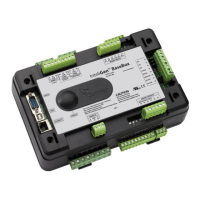
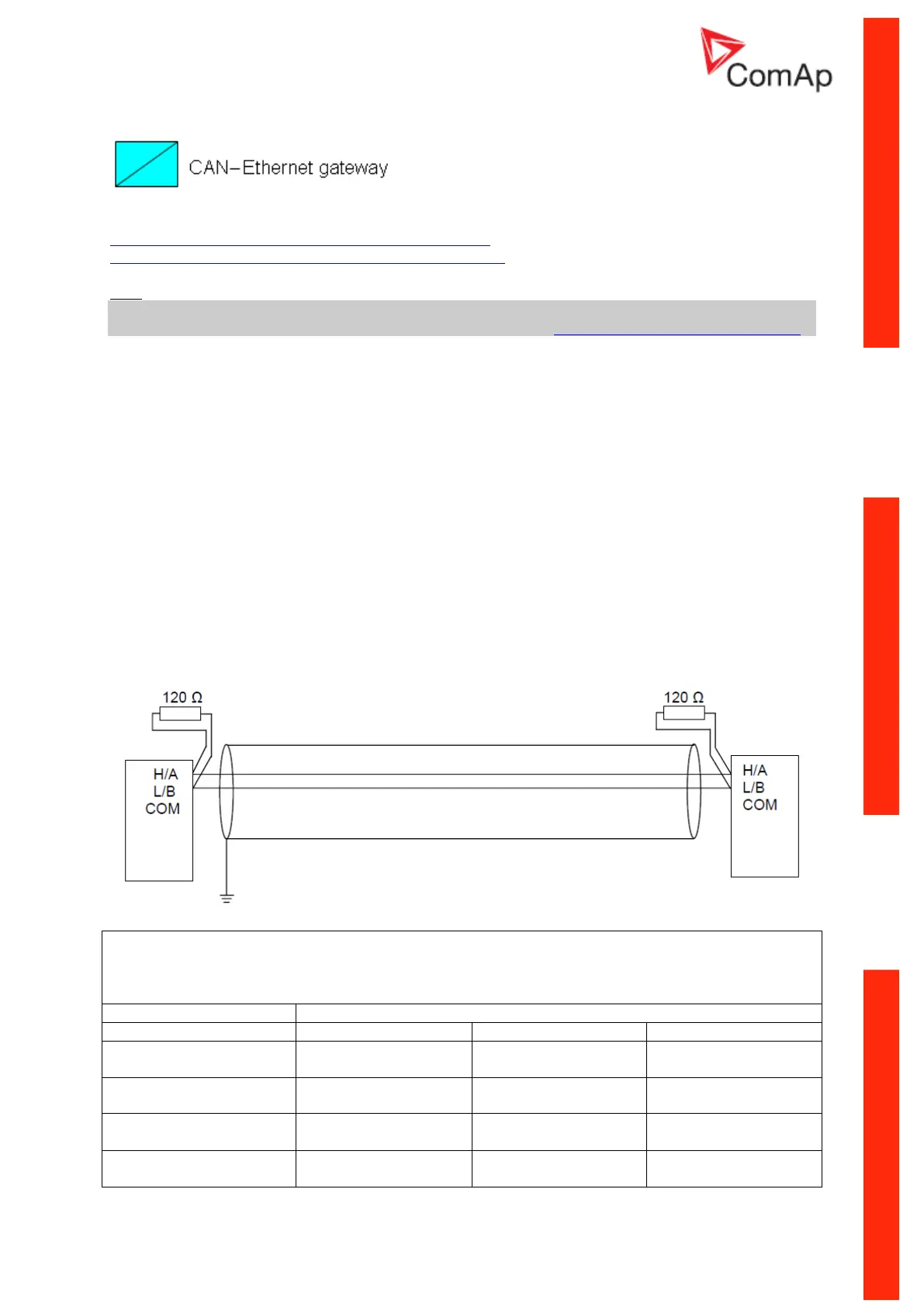